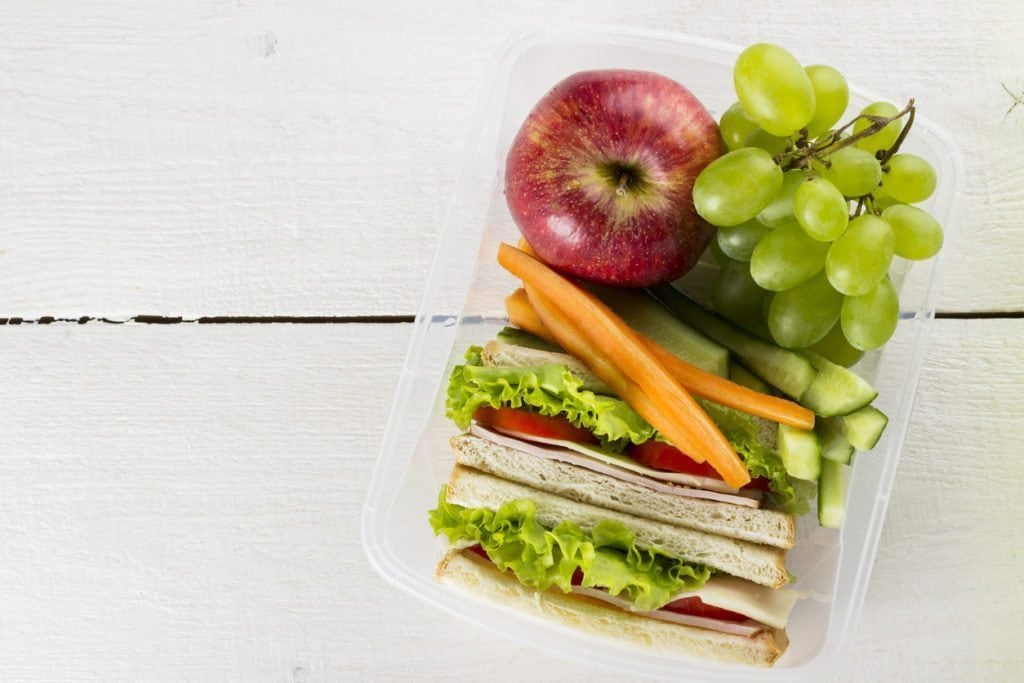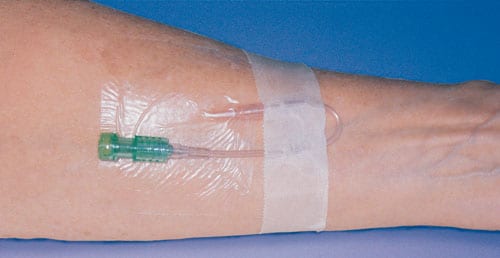If you read my tips for a happier and healthier pregnancy, you are well on your way to having a happier and healthier birth! However, you can do a few more things to have your desired birth experience. (This is assuming that you want a vaginal birth.) So here are 12 tips for a happier and healthier birth!
1. Write a Birth Plan
Writing out a birth plan can be extremely helpful because it makes you think about each part of labor and how you would like it to go. Writing out a birth plan requires you to learn about your options and think about what you would prefer to happen throughout the process, which is empowering! It also gets everyone that is supporting you on the same page.
I prefer to call a birth plan “birthing goals” because labor and birth don’t always go as planned. It’s still good to be flexible and remember that these are your goals. Being adaptable to change is important. Again, this exercise educates you on your options so that you can handle those changes and ultimately have a more satisfying birth.
If you’re still unconvinced, read these reasons to create a birth plan.

2. Create a Support Team
Your husband/partner will likely be by your side throughout your labor (unless you or your partner are uncomfortable). Whoever is with you on your birthing day must understand your wants and desires. Ask your doctor or midwife all of your questions during your prenatal visits. Hearing their responses lets you know if they will support the birth you want. (Here is a list of questions to ask your OB!)
*Tip: If you have your baby at the hospital, you, unfortunately, won’t know who your nurse is. However, if you feel the nurse assigned to your room doesn’t support your wants and needs, your husband/partner can always request a new nurse. They can go to the nurses’ station and speak with the charge nurse. This is your birth, and if you aren’t feeling supported or heard, you can request someone new.
Since labor can be a long process, it’s also nice to line up some additional support. For example, you might consider hiring a doula for extra physical, emotional, and informational support.
3. Labor at Home
Not rushing to the hospital is encouraged when you first start feeling contractions. If you took a childbirth class, your instructor probably told you that the time to go to the hospital is when your contractions are 5-1-1. (Contractions are 5 minutes apart, each is 1 minute long in duration, and in a consistent pattern for 1 hour straight). This is how we establish that you are no longer in early labor but now in active labor. However, many couples get turned away at the hospital even at this point and are told to go home. The reason is that they may not have much or any cervical dilation, or their contractions slowed down. I always suggest that my clients go to the hospital when their contractions reach 4-1-1 or 3-1-1, especially if they want an unmedicated or minimal intervention birth.
Remember, when you are at home, you can eat and drink. You are free to move around and be comfortable. I know it’s exciting when the process starts, and you may be nervous that the baby will come sooner than you think, but try to stay home until you’ve reached a little further in your labor (around 4-1-1 or 3-1-1). I promise that it will help.
*Tip: Download a contraction timer app on your smartphone so your husband/partner can keep track of the length of your contractions and the time between them. It does the math for you and keeps a record!
4. Snack Lightly

Eating light snacks during labor while at home will help maintain your energy level. However, I recommend avoiding fatty or hard-to-digest foods since they can make you feel nauseous during labor and cause you to throw up. Having too full of a stomach can have the same effect. Whatever you decide to eat, be sure that these are smaller, lighter snacks.
5. Stay Hydrated
With your deep and rapid breathing and your uterus contracting every couple of minutes, you can quickly lose fluids. A study at the University of California at Irvine proved that doubling the rate IV fluids are given can shorten labor by more than an hour. How awesome is that?! “These women’s labors were also half as likely to last longer than 12 hours,” said Thomas Garite, MD, the study author. So be sure to drink water between contractions and tell the nurse when you feel dehydrated.1
6. Don’t Lie Down
Lying down is the most uncomfortable position to be in during labor. Ever. Because of gravity, the baby’s head pushes on your back, causing your contractions to become more intense and painful. However, when standing upright and moving, you use gravity to your advantage because the baby’s head is pressing on your cervix, helping you dilate more and speeding up your labor. The movement also helps widen your pelvis, which allows your baby’s head to drop lower in your pelvis. So get up out of that bed! This will feel so much better than lying on the bed.
Try these:
- Best Positions To Do In Early Labor
- Best Positions To Do In Transition Labor
- Best Positions To Do In Active Labor
7. Massage

You may love going to the spa and getting a massage. Or you may hate massages because you don’t like to be touched. Whichever way you feel, I promise you will appreciate supportive touch during labor. In a Touch Research Institute (Miami, Florida) study, they learned that laboring women who received massages from their partner or doula reported feeling less depressed and had less labor pain and anxiety during childbirth than those who did not get massaged.2 When you stimulate an area of your body in pain, whether with pressure and/or heat, you soften the pain messages sent to the brain, so let your partner touch or massage you. Tell them what feels best and whether it is helping during that time of your labor.
8. Distraction
When I first tell women how long labor typically lasts for first-time mothers, I know it’s not a fun answer. I have helped first-time mothers have a baby in less than three hours up to 72 hours and everything in-between. Unfortunately, there is no way to tell how long your labor will last. The average labor time for a first-time mother lasts between 12 to 24 hours. When you start feeling contractions—which may feel like lower back pain or abdominal cramps—try to stay calm. You have a little while until baby shows up, so try to distract yourself with other activities. Try taking a walk, reading a book, watching your favorite TV show, cooking, or baking cookies, which you can give to your nurses. 😉 Basically, anything that relaxes you. The more relaxed and distracted you are, the more it will help speed things along and not allow you to focus on the clock.
9. Get in the Water
When we are uncomfortable and feeling pain, we tend to tense the muscles in our bodies. Unfortunately, doing this in labor causes more discomfort and can slow down our labor progress. A warm shower or bath can help relax your muscles, relieve discomfort, and help you progress your labor. I call hydrotherapy the natural epidural. It truly makes things feel better.
*Tip: Do not get into the tub too soon in labor because it can slow down and potentially stop your contractions. You want to wait until you have reached active or transition labor. If taking a shower, aim the showerhead at the small of your back or your belly. Put the water wherever you are feeling your contractions the most. A shower is fine at any stage of labor.
10. Get a Hep-lock

An IV can get in the way and limit your mobility during labor. Yes, it is hooked to wheels and can roll around with you, but do you or your partner really want to drag that thing around? It must come with you whenever you want to move, walk the halls, or go to the bathroom. Hospitals prefer an IV because they are concerned about having access to a vein if an emergency should arise. They also want to make sure that you are hydrated. An IV allows them to administer fluids and/or medicine immediately should you or your baby need something. A hep-lock (also called a saline lock) is a great compromise. They will likely say no if you request to have neither, but it doesn’t hurt to ask!
So what is a hep-lock? A hep-lock is a portal for the IV drip threaded into a peripheral vein, flushed with saline, and then capped off for later use.3 It is not hooked to an IV pole, so you aren’t tethered to anything, but the hospital staff still has easy access to a vein if you need something later. As for dehydration, chew on some ice chips or drink water (or labor-aide) in-between contractions.
*Tip: If you receive a hep-lock or an IV, request NOT to have it placed near a joint. It isn’t pleasant to feel like you can’t bend your elbow or wrist or move your hand during labor because your IV is in the way.
11. Let Your Baby Break Your Water
Breaking your water may help speed things up, but it’s not guaranteed. In my opinion, it’s one of the least effective ways of induction. If you must have your water artificially broken, I recommend waiting until you are at least 6cm dilated. Anything before that could cause no change and put you at risk of getting an infection.
Also, your bag of water helps keep your contractions a bit more tolerable. It acts as a cushion when your uterus contracts, softening the blow to you and your baby. When you no longer have that “cushion,” the strength of your contractions are more intense for you. This can sometimes cause more stress on the baby. I have seen this happen to some of my doula clients. After the doctor breaks the bag of water, their baby no longer tolerates the contractions, and now they need an emergency cesarean. My advice? Wait until your baby breaks your water on its own. By doing this, the chances of these things happening will decrease.
Another thing, some (very rare) babies can be born inside their bag of water, which is called being born en caul.4 It’s pretty awesome and, in my opinion, probably the coolest and most peaceful way to be born.5
12. Keep Breathing
You won’t believe how many women I see either hold their breath during contractions or breathe too quickly, which can cause them to hyperventilate. You want to avoid doing these things during labor. We always want to give plenty of oxygen to the baby, so taking slow, deep breaths will benefit you both. Also, slowing your breathing and finding a good breathing pattern can help you relax during your contractions. It also helps you rest when each contraction ends. Controlled breathing is everything, and it will help you maintain your energy throughout.
Now that you know all my tips for a happier and healthier birth, I have one last thing to say. I tell all of my doula clients: to remember that labor is temporary and eventually ends. Then you will receive the best gift ever, your baby! Keep going. It will all be worth it. 🙂























